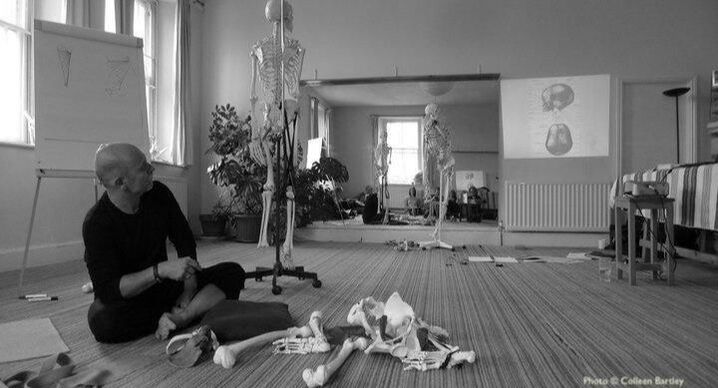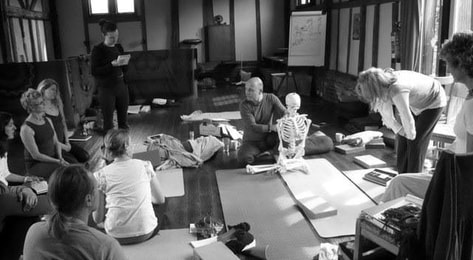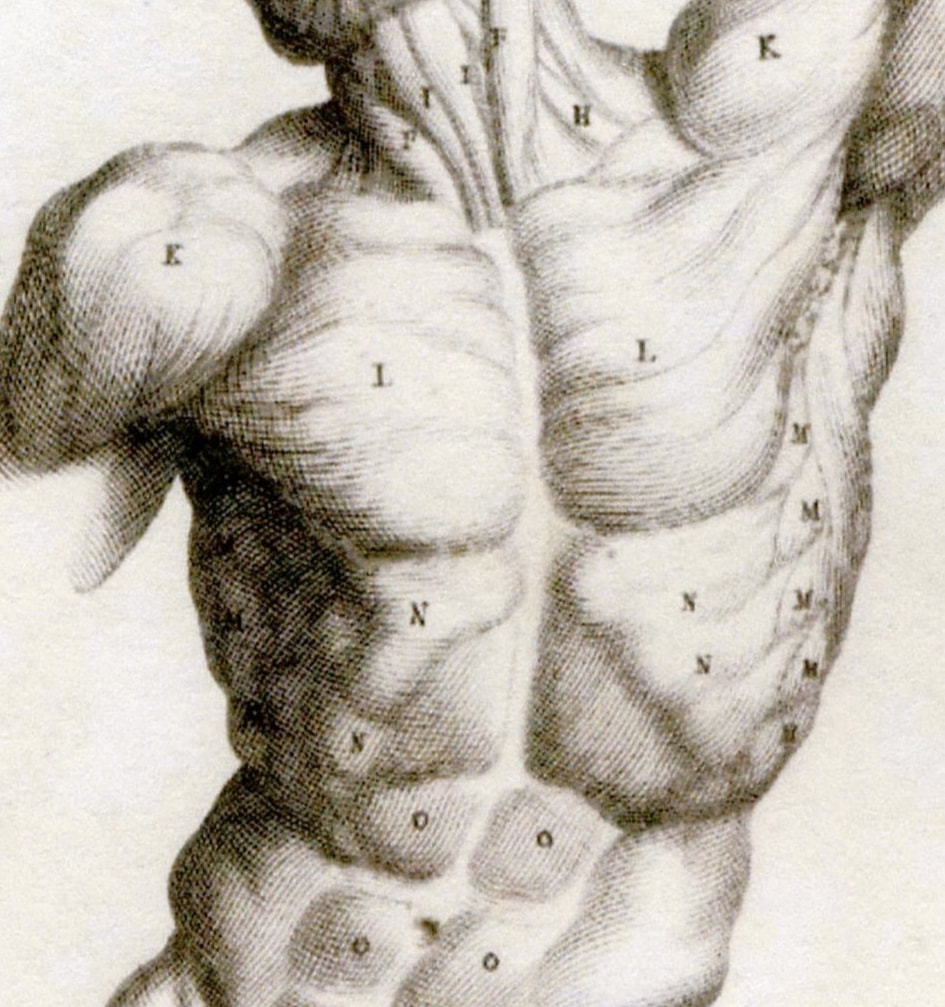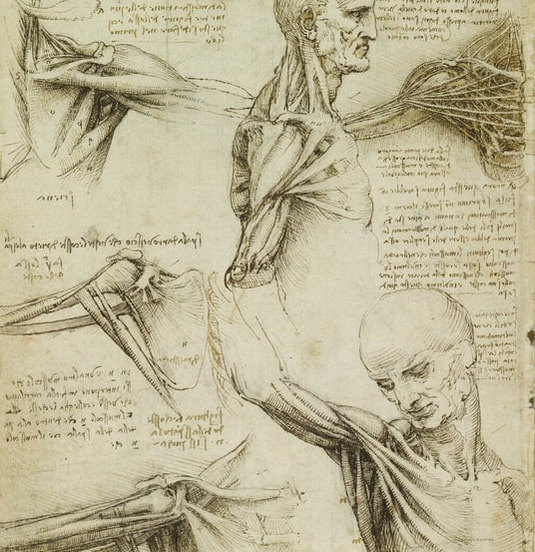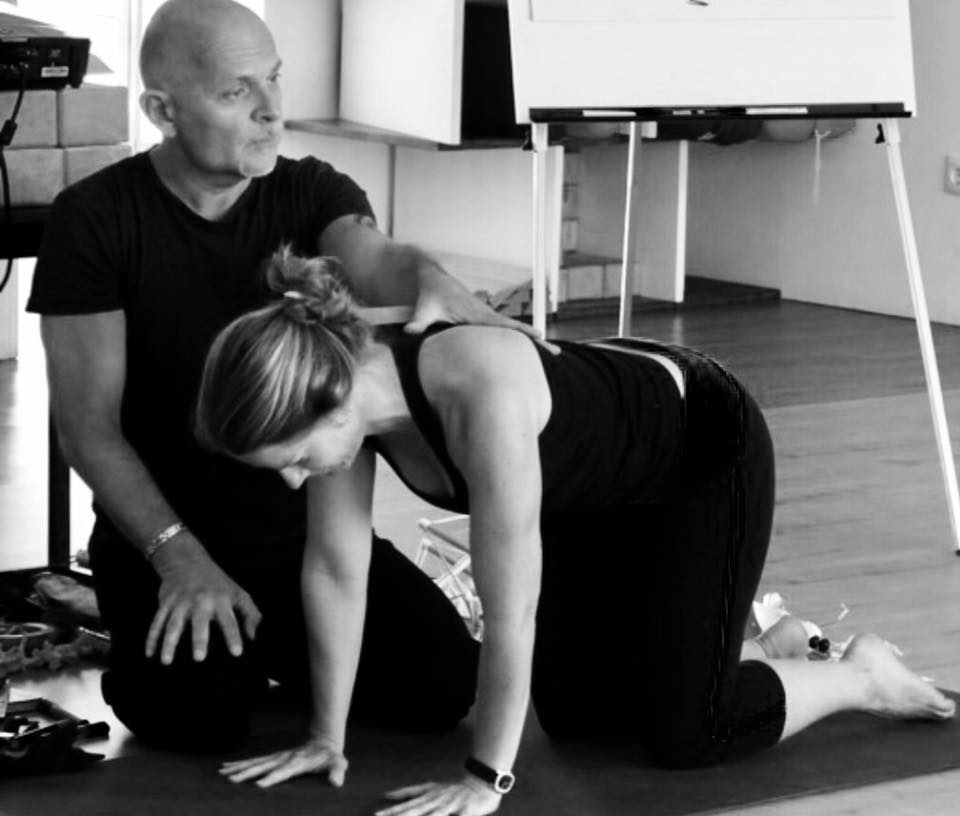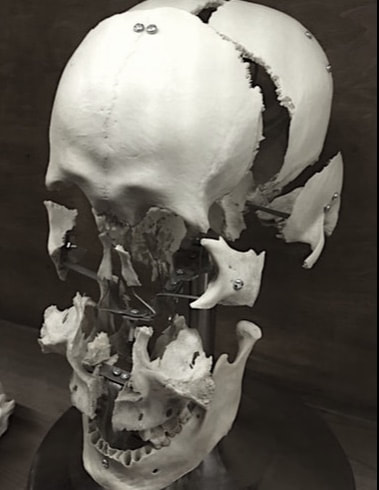The Anatomy Series with Gary Carter
(11 Weekends)
The Anatomy & Myofascial Series for Movement Teachers (Yoga, Pilates, Gyro, Contact Improvisation & Dance) and Personal Trainers, explores the anatomy of movement in relation to practice, movement analysis, 3-D work, and experiential anatomy. It will encourage teachers to ‘see’ their students more clearly, thus helping with rehabilitative issues. The course aims to help teachers take a flexible, intelligent approach to their specific field with individual students.
Gary Carter shows how a thorough knowledge of anatomy can help teachers to make intelligent choices about the way they teach their pupils. His workshops involve the use of props, illustrations, and hands-on work in class to help demonstrate the principles that underlie your movement practice. This course of experiential anatomy will run for ten weekends.
For more information please contact:
Course Coordinator – Sharon Carter – 07778 403578 • [email protected]
Gary Carter shows how a thorough knowledge of anatomy can help teachers to make intelligent choices about the way they teach their pupils. His workshops involve the use of props, illustrations, and hands-on work in class to help demonstrate the principles that underlie your movement practice. This course of experiential anatomy will run for ten weekends.
For more information please contact:
Course Coordinator – Sharon Carter – 07778 403578 • [email protected]
|
Gary Carter’s
ANATOMY & MYOFASCIAL MOVEMENT COURSE for Teachers A 11-weekend course starting in February 2024 Brighton & Hove Structural, Functional, & Experiential Anatomy for Movement Teachers and Manual Therapists (and trainee teachers in the final year of training) Venue: Flow State Hove, 48 Brunswick Street West, Hove BN3 1EL Weekend 1 • 16 - 18 FEBRUARY, 2024 INTELLIGENT DESIGN? Development of Movement Patterns Development of Bone Ligaments, Joints, and Skeleton Weekend 2 • 5- 7 APRIL, 2024 SENSE OF SELF Perception - Kinaesthetic sense Muscle How Bones and Fascia Communicate The Fascial Web Gravity response Weekend 3 • 10 - 12 MAY, 2024 THE FEET AND UP! The Foot - Primary Support The Legs - Lightness and Strength The Pelvis & Pelvic Freedom Weekend 4 • 21 - 23 JUNE, 2024 THE PELVIS AND UP! THE SPINAL ORGAN part1 Psoas and Piriformis and the 'Pelvic Trampoline' The Deep Six and Pelvic Fluidity Weekend 5 • 19 - 21 JULY, 2024 THE SPINAL ORGAN part 2 WHAT IS THE CORE? Breath and Movement Spinal Structure and Function The Spine as an Organ Anatomy of Breath Understanding Breathing Practices and their application to the work Weekend 6 • 6 - 8 SEPTEMBER, 2024 BALANCE OF WEIGHT The Cranium and Neck – Cranio Sacral Rhythms The Shoulder Girdle Weekend 7 • 25 - 27 OCTOBER 2024 INWARDS & UPWARDS The Arms and Back The Bandhas Diaphragms of the body The Cups and Domes in movement Weekend 8 • 6 - 8 DECEMBER, 2024 SPRING LOADED AND LIGHT Network Spiral Dynamics The Fluid Body Tensegrity and the Muscle Matrix Weekend 9 • 17 - 19 JANUARY, 2025 ANATOMY OF CONNECTION – part 1 The Myofascial Meridians in Asana, including the Anatomy Trains Theory Straps Bands & Slings! Effective Body Reading Tensegrity in Movement Weekend 10 • 7 - 9 FEBRUARY, 2025 ANATOMY OF CONNECTION – part 2 The Myofascial Meridians in Asana, including the Anatomy Trains Theory Straps Bands & Slings! Effective Body Reading Tensegrity in Movement Weekend 11 • 8 & 9 March 2025 ANATOMY OF CONNECTION – part 3 The Myofascial Meridians in Asana, including the Anatomy Trains Theory Straps Bands & Slings! Effective Body Reading Tensegrity in Movement SATURDAYS - 1 - 7pm SUNDAYS - 1 - 6pm FEES - £2250 | EARLY BIRD - £1995 ( until 30 Nov 2023) |
Aims and Objectives
Students will deepen their knowledge of Structural and Integrated Anatomy. This course will involve the concept of hands on touch skills, fascial touch, feel for fascial elasticity, experiential connected anatomy in relation to posture and function for movement in all modalities.
Learning Outcomes:
Knowledge: On completion of this module the student will be able to:
Skills
The module will enable the successful student to:
Syllabus:
This course will work in a developmental manner covering the following subject areas:
• Evolution of the human body; detailed understanding of muscle, structure, function and action, and integrated connectedness, exploring our neurological relationship to gravity and how this relates to movement and posture.
• The art of creating control, balance and freedom of movement.
• In depth exploration of the connective system of the body
• Learning to see and recognize imbalances and balance of the myofascia including structural and fascial
fitness.
Modes of delivery for the course include lectures, theory, slide presentations, multimedia, 3d models and props, Interactive practical and functional work, movement work, hands on work and touch skills, discussions and illustrations.
There are continuous assessments throughout the duration of the course with Journals to be kept on the experiences and learnings on the course, practical homework assignments, (no written homework) quizzes and presentations. The final 2 weekends create four days of body reading practices, a revision of the entire course with an ability to understand postural and movement imbalances and fluidity.
To qualify for this course you will need to have completed or almost completed a Teacher Training course in Yoga or other movement practice, with a daily movement practice as part of your routine. Some teaching experience is preferred but not essential. An assumed basic level of Anatomy is essential.
Important to note: this course does not come with a manual. It’s essentially an experiential course, and note taking is encouraged. You will emerge from this course having embodied what you have learned.
Students will deepen their knowledge of Structural and Integrated Anatomy. This course will involve the concept of hands on touch skills, fascial touch, feel for fascial elasticity, experiential connected anatomy in relation to posture and function for movement in all modalities.
Learning Outcomes:
Knowledge: On completion of this module the student will be able to:
- Understand the complexity of the human structure, how it evolved, and postural tendencies, and learn to see patterns and structure.
- Understand how the connective tissue system affects the body in general and specific movement, learning to body read in movement and stasis.
- Relate physical aspects of the body to the improvement of posture and movement quality
- Appreciate how body balance, from a structural viewpoint, is achieved
- Appreciate the inter-relationship between each system/network of the body
Skills
The module will enable the successful student to:
- Explain and demonstrate their understanding of the physical structure of the body.
- Recognise postural deviations, restriction and imbalance of connective tissues within differing bodies.
- Analyse movement through a scientific base, which in turn can improve movement function.
Syllabus:
This course will work in a developmental manner covering the following subject areas:
• Evolution of the human body; detailed understanding of muscle, structure, function and action, and integrated connectedness, exploring our neurological relationship to gravity and how this relates to movement and posture.
• The art of creating control, balance and freedom of movement.
• In depth exploration of the connective system of the body
• Learning to see and recognize imbalances and balance of the myofascia including structural and fascial
fitness.
Modes of delivery for the course include lectures, theory, slide presentations, multimedia, 3d models and props, Interactive practical and functional work, movement work, hands on work and touch skills, discussions and illustrations.
There are continuous assessments throughout the duration of the course with Journals to be kept on the experiences and learnings on the course, practical homework assignments, (no written homework) quizzes and presentations. The final 2 weekends create four days of body reading practices, a revision of the entire course with an ability to understand postural and movement imbalances and fluidity.
To qualify for this course you will need to have completed or almost completed a Teacher Training course in Yoga or other movement practice, with a daily movement practice as part of your routine. Some teaching experience is preferred but not essential. An assumed basic level of Anatomy is essential.
Important to note: this course does not come with a manual. It’s essentially an experiential course, and note taking is encouraged. You will emerge from this course having embodied what you have learned.

